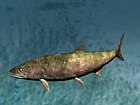
Watsonulus is an extinct genus of prehistoric ray-finned fish that lived during the Early Triassic epoch in what is now Madagascar. It may have also existed in what is now Himachal Pradesh, India, during the Induan age.
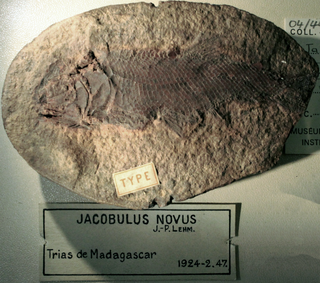
Jacobulus is an extinct genus of prehistoric ray-finned fish that lived during the Early Triassic epoch in what is now northern Madagascar 252.3 to 251.3 million years ago. The type species is Jacobulus novus (monotypy). It was a small fish less than 10 centimetres (3.9 in) in length. J. novus ecology was a grazer-detritivore. It belongs to the Parasemionotidae together with Albertonia, Candelarialepis, Icarealcyon, Lehmanotus, Parasemionotus, Qingshania, Stensioenotus, Suius, Thomasinotus, and Watsonulus.
Trachelacanthus is an extinct genus of prehistoric bony fish that lived during the Late Permian epoch.

Elonichthys is an extinct genus of prehistoric bony fish. The genus is represented by several species from Carboniferous and Permian of Europe, Greenland, South Africa, and North America.

Euthynotus is an extinct genus of prehistoric bony fish that lived during the early Toarcian stage of the Early Jurassic epoch. It is generally considered the basalmost pachycormiform.
Crenilepis is an extinct genus of prehistoric bony fish that lived in the seas of present-day Europe during the Anisian stage of the Middle Triassic epoch.
Luganoia is an extinct genus of prehistoric bony fish that lived during the early Ladinian stage of the Middle Triassic epoch.
Swenzia is an extinct genus of coelacanthid fish from the late Jurassic of France. It contains a single species, S. latimerae, which was originally described as Wenzia latimerae. Because the generic name Wenzia was already preoccupied by a snail, the generic name was amended to Swenzia. It is the fossil genus most closely related to the living coelacanth, Latimeria.
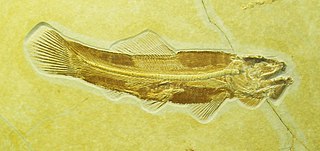
Amiopsis is an extinct genus of prehistoric bony fish belonging to the family Amiidae. Fossils are known from the Late Jurassic Solnhofen Limestone, Germany, the Early Cretaceous Purbeck Group, England, La Pedrera de Rúbies Formation, Spain and Bernnissant Iguanodon locality, Belgium and the Late Cretaceous (Cenomanian) of the Balkans. The monophyly of the genus is questionable, due to it being based on a single character, "the presence of three or more lateral fossae on each side of most abdominal centra". Remains previously assigned to this genus from the Early Cretaceous Las Hoyas, Spain have been moved into the new genus Hispanamia.
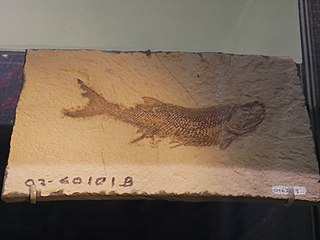
Cyranorhis is an extinct genus of prehistoric bony fish from the Carboniferous period.
Urosthenes is an extinct genus of prehistoric bony fish that contains two species: U. australis and U. latus.
Sphyraenodus is an extinct genus of prehistoric bony fish. Includes the species Sphyraenodus multidentatus from Angola.
Kentuckia is an extinct genus of prehistoric bony fish.

Orthocormus is an extinct genus of prehistoric pachycormiform bony fish. It is known from three species found in Late Jurassic (Kimmeridgian) aged plattenkalk deposits in Bavaria, Germany. The species "Hypsocormus" tenuirostris Woodward 1889 from the late Middle Jurassic (Callovian) Oxford Clay is not closely related to the type species of Hypsocormus, and is more closely related to Orthocormus + Protosphyraena, and thus has sometimes been referred to in open nomenclature as Orthocormus? tenuirostris.
Pleuropholis is an extinct genus of prehistoric ray-finned fish.
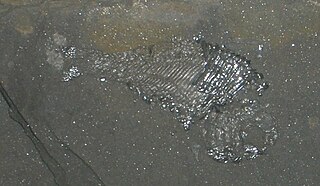
Peltopleurus is an extinct genus of bony fish. Two species are currently recognised as valid: Peltopleurus lissocephalus and Peltopleurus tyrannos.
Joffrichthys is a genus of prehistoric bony fish. This North American genus includes three species, J. symmetropterus, J. tanyourus and J. triangulpterus. The last species is known from the Paleocene of the Sentinel Butte Formation of North Dakota.

Tarasiiformes is an extinct order of prehistoric ray-finned fish.
Gardinerpiscis is an extinct genus of prehistoric actinopterygian fish that lived during the Kungurian age of the early Permian epoch in what is now Kazakhstan. It was originally named "Gardineria" by Kazantseva-Selezneva (1981). Because this genus name was already given to an extant scleractinian coral, the new name Gardinerpiscis was erected for the Permian fish. The genus includes a single species (monotypy): Gardinerpiscis akkolkensis.

Parasemionotiformes is an extinct order of neopterygian ray-finned fish that existed globally during the Triassic period. It comprises the families Parasemionotidae and Promecosominidae. Many of the included genera are monotypic and most species lived during the Early Triassic epoch.











